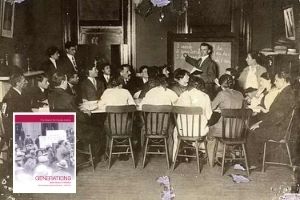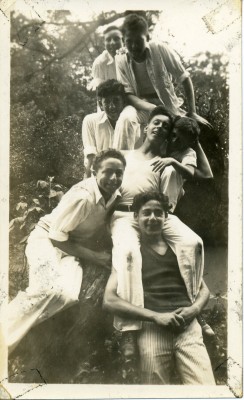A “Children’s Playground” and “Centre for Adults” Part V

Article by Jennifer Vess. Originally published in Generations 2009-2010: 50th Anniversary Double Issue: The Search for Social Justice.
Part V: End of an Era
Missed parts 1 – 4? Start from the Beginning.
The JEA maintained a strong settlement house for over forty years. During its first decade it applied the latest theories on social services and moral uplift espoused by Progressive reformers. Its workers pushed for Americanization in much the same way as other settlement houses throughout the U.S. while emphasizing the Jewish nature of the organization. But the country and Baltimore were changing, and the JEA had to change with them. By the 1930s and 1940s, older immigrants had learned to function in American society, their children had grown up as Americans, and the restrictive immigration laws of the 1920s had greatly reduced the number of new immigrants, thus diminishing the perceived need for an intensive Americanization process. All over the country new ideas and new needs led settlement houses to shift their purposes, often becoming more like the community centers we think of today.[1]

In addition to these nationwide trends, the JEA faced other changes specific to Baltimore. While still loved and popular, by the late 1940s the JEA building on Baltimore Street was no longer the center of a Jewish community. Families had been moving away from East Baltimore since the 1920s, mostly to northwest Baltimore, and the JEA had responded by opening northwest and southwest branch locations.
With its core neighborhood changing, the city’s Jewish population maturing, and ideas about social services evolving, the JEA no longer played the same critical role in meeting the needs of the Jewish community. As had happened forty years before when the JEA was formed, community leaders saw a need to consolidate activities in order to provide the best services. Despite the strong affection boys and girls in Baltimore still held for the JEA, it closed down in 1952 when the Associated Jewish Charities merged the JEA, the Young Men’s and Young Women’s Hebrew Association, and Camp Woodlands into the Jewish Community Center, which opened on Park Heights Avenue – the demographic center of the Jewish community in the 1950s.
The JEA had been the center of many East Baltimore lives for forty-three years. At its height monthly attendance rose into the tens of thousands – 22,000 children and adults per month, according to one report of the early 1920s.[2] But the impact of the JEA went far beyond numbers. To this day, its loyal members keep it going through the JEA Fellowship Association. Those who visited and loved the JEA in their youth continue to interact with one another through regular newsletters and alumni meetings. Even without a building the JEA endures.
Continue to Side Bar 1: The Levy Building
Notes:
[1] Judith Ann Trolander, Professionalism and Social Change: From the Settlement House Movement to Neighborhood Centers, 1886 to the Present (New York: Columbia University Press, 1987).
[2] January, 1922 meeting minutes, MS 170, Folder 213.
